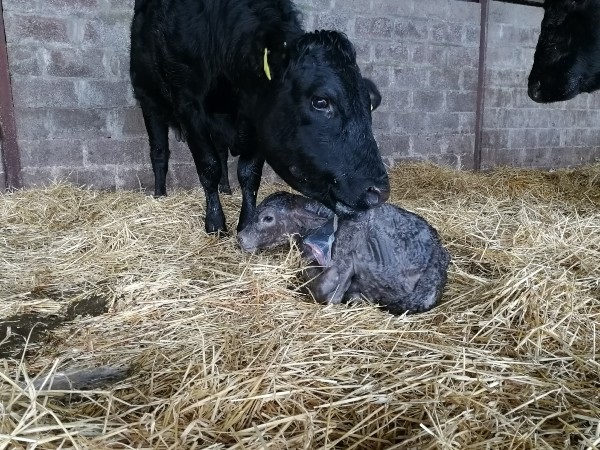Planning ahead for calving in the beef herd
3 April 2020‘Social distancing’ and ‘self-isolation’ were never mentioned until a few weeks ago, we are all now acutely aware of the implications of these measures, as we work together as a country to try to beat the COVID-19 Pandemic. As a vital industry, farming has been less affected by government restrictions, as we need to feed the country and avoid major animal welfare issues. However, at this critical time of the year, we cannot get complacent. As cases grow exponentially, many farmers are going to catch the virus, some will be hospitalised or worse. Where would your business be if a key member of the team was out of commission?
With most beef cows in the country calving down in the next few weeks, it has never been more important to keep things simple. What if you wake up tomorrow morning with symptoms of the virus and are unable to work? Would someone else be able to step in and help you out? On a very simple level, think about tagging. Although you are allowed 20 days to tag a beef calf and you know which calf belongs to each cow, someone coming in to act as relief wouldn’t know where to start. Consider tagging calves every day or every other day, to avoid a nightmare scenario. Obviously, this may have major health and safety issues and may not be entirely practical.
Dangerous cows are a liability on all farms and with research proving that those angry cows are not actually better mothers, they wean lighter calves and they pass their temperament issues onto there calves, it is really difficult to justify the risk of keeping these cows. However, that’s a discussion to have when choosing cows not to put back to the bull. At this stage, you will be aware of a few cows in your herd that might have temperament issues at calving time but again consider you are not there and someone else is helping you out. We know that quiet cows are more likely to cause issues on farms, as complacency costs lives, and anyone working with calving cows should have their wits about them at all times but giving them a head start as to cows which are likely to be an issue is a good idea.
At the top of the calving shed, stick a whiteboard up on the wall. On it write, using a red pen, the tag number of any cows that may have a temperament issue. This whiteboard will also be invaluable for recording calving information. Consider using the board to record calving data, like the cow’s number, calf’s number, sex, colour, breed. You can also add other details on it like, has the calf suckled? Add an ‘S’ next to its entry on the board; was it assisted to calf? Was it assisted to suckle? Did you stomach tube it? All this can easily be recorded and will allow a helper to come in and have a good idea of what’s been happening. It’s also a really good idea to write down your calving protocol and it would help if your pre and post-calving rations were recorded somewhere to allow for as much continuity as possible. Next to the whiteboard is also a really good place to store everything you need for calving, like iodine, calving jack, gloves, tagging plyers etc, this makes it nice and simple to locate whatever is needed and also, as it’s next to the whiteboard, when you take the item back, you can record it too!
While recording things on a whiteboard and tagging a few calves may seem like a waste of time, when there are so many other things to do, it will actually save time in the long run and will also be invaluable if someone else has to step in to help you. This is the time to plan for the worst and hope for the best.
Robert Ramsay, for the Farm Advisory Service
Sign up to the FAS newsletter
Receive updates on news, events and publications from Scotland’s Farm Advisory Service

